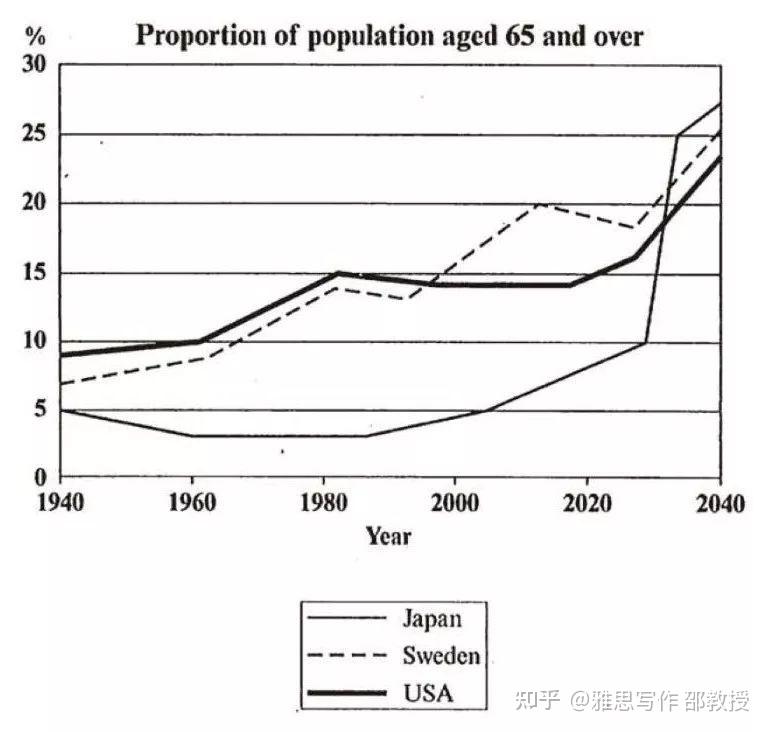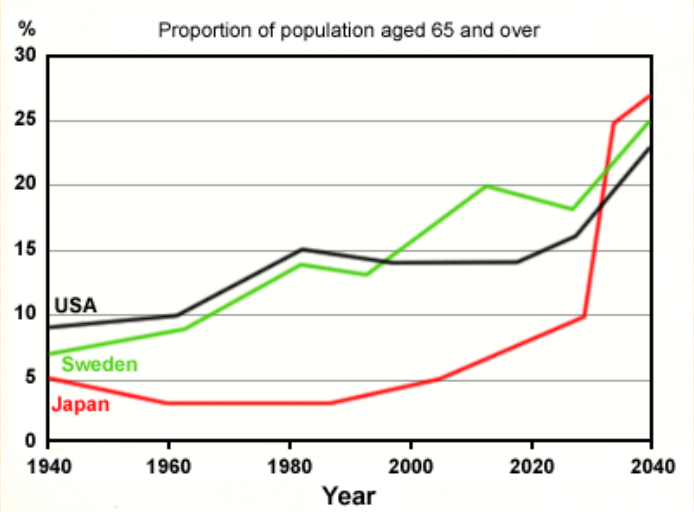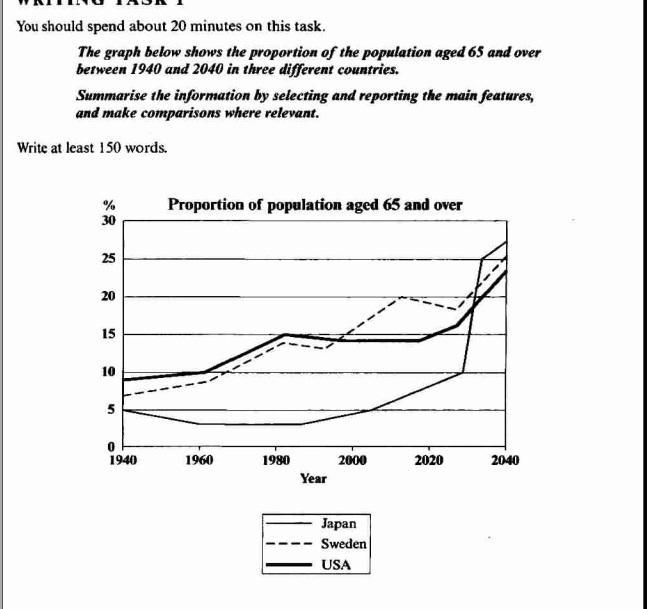The graph below show the proportion of the population aged 65 and over between 1940 and 2040 in
World Bank staff estimates using the World Bank's total population and age/sex distributions of the United Nations Population Division's World Population Prospects: 2022 Revision. License : CC BY-4.0 Line Bar Map - Population ages 65 and above, total from The World Bank: Data

请用这9个线图练习雅思小作文(附难度系数) 知乎
Australia has an aging demographic. The proportion of the Australian population aged 65 and over was 15% in 2017, a trend which is expected to continue to grow. It is estimated that by 2057 older people will account for 22% of the Australian population which translates to 8.8 million people. This increase in elderly population is due to what is known as The Australian Baby Boom (years 1946 to.

The graph below shows the proportion of the population aged 65 and over between 1940 and 2040 in
Definition ofElderly population. The elderly population is defined as people aged 65 and over. The share of the dependent population is calculated as total elderly and youth population expressed as a ratio of the total population. The elderly dependency rate is defined as the ratio between the elderly population and the working age (15-64 years.

(A) Proportion of population aged 65 + . (B) Proportion of population... Download Scientific
Older people make up a considerable proportion of Australia's population - at 30 June 2020, over 1 in 6 people were aged 65 and over. The report details the demographic profile of older Australians, and adopts a person-centred model to report on their health and wellbeing across key domains.

The Graph Below Shows The Proportion Ò The Population Aged 65 And Over Between 1940
This proportion increased to a high of 67.5% in 2009, before declining to 65.5% by 30 June 2018. In the 12 months to 30 June 2018, the Australian working-age population increased by 1.3% (or 203,200 persons). During this period, the working-age population in Victoria grew by 2.1%, higher than the national growth rate.

IETLS writing task 1 Proportion of population ages 65 and over in the US, Sweden and Japan
The 2018 ABS Survey of Disability, Ageing and Carers reported that for older Australians (aged 65 and over) with an income source, the main source of income was: government pension or allowance (57%), decreasing from 63% in 2015 superannuation, annuity or private pension (21%), increasing from 18% in 2015

Proportion of population aged 65 and over Download Scientific Diagram
Ageing population Like most developed countries, Australia's population is ageing as a result of sustained low fertility and increasing life expectancy. This has resulted in proportionally fewer children (under 15 years of age) in the population and a larger proportion of people aged 65 and over. Graph Table Download

Population Proportion, Sample Proportion, Population Mean and Sample Mean YouTube
JUNE 25, 2020 — The U.S. Census Bureau today released estimates showing the nation's 65-and-older population has grown rapidly since 2010, driven by the aging of Baby Boomers born between 1946 and 1964. The 65-and-older population grew by over a third (34.2% or 13,787,044) during the past decade, and by 3.2% (1,688,924) from 2018 to 2019.

Proportion of population age 65+ Download Table
Both the number of people at the older ages is growing and older people are representing an increasing share of the total population (CEPAR 2021). Recent data show that: At 30 June 2020, there were an estimated 4.2 million older Australians (aged 65 and over) with older people comprising 16% of the total Australian population (ABS 2020b).

Research Highlights on Health and Aging
Proportion of population aged 65 years & over In the year ending 30 June 2019, the number of people aged 65 years and over increased by 125,400 people (or 3.2%). In the year ending 30 June 2019, the population aged 65 years and over grew in all states and territories. The largest percentage increase in this group was in the Northern.

Chart 5 Proportion of the population aged 65 and over, by sex, census metropolitan areas, July 1
Table 1 shows the impact of four different levels of migration upon future levels of ageing in Australia. With zero net migration, the percentage of the population aged 65 years and over would increase from 14 per cent in 2013 to 28.4 per cent in 2053. With migration of 300,000 per annum, only 21.2 per cent of the population would be aged 65.

Aging National Policies World Health Systems Facts
The share of the Chinese population aged 80 and over will rise even more quickly, increasing more than three-fold from 1.8% in 2019 to 8.2% in 2050. Brazil - whose share of the population aged 65 and over was barely half the OECD average in 2019 - will see similarly rapid growth, with nearly 22% of the population projected to be aged 65 and.

The graph shows the proportion of population aged 65 and over between 1940and 2040 in three
Overall, it is clearly shown that the proportion of the population who aged 65 or above in the USA and Sweden increases from 1940 to 2040 with slight drops in between whereas that in Japan decreases starting from 1940 to 1980 before a sharp rise in the number of elderly people in that country.

The Graph Shows The Proportion of The Population Aged 65 and Over Between 1940 and 2040 in Three
The Australian population is ageing. The proportion of older people, those aged 65 years and over, has been steadily increasing over the last century for both men and women, and this trend is expected to continue.

Proportion of Population Aged 65 and Over in Major Developed Countries. Download Scientific
At 30 June 2020, approximately 4.2 million people (16% of Australia's total population) were aged 65 and over. This report focuses on older Australians - generally those aged 65 and over, unless otherwise specified.

Proportion of the population aged ≥65, proportion of the population at... Download Scientific
In 1980, 15% of the German population was aged 65 or over. By 2000, this figure had risen to 20%. Meanwhile, rates for the United Kingdom and Canada were roughly 14% and 10% respectively in 1980, and by 2000 both countries had risen to 15%. Projected figures for 2030 show a further 5% increase in the elderly population in Germany, reaching 25%.